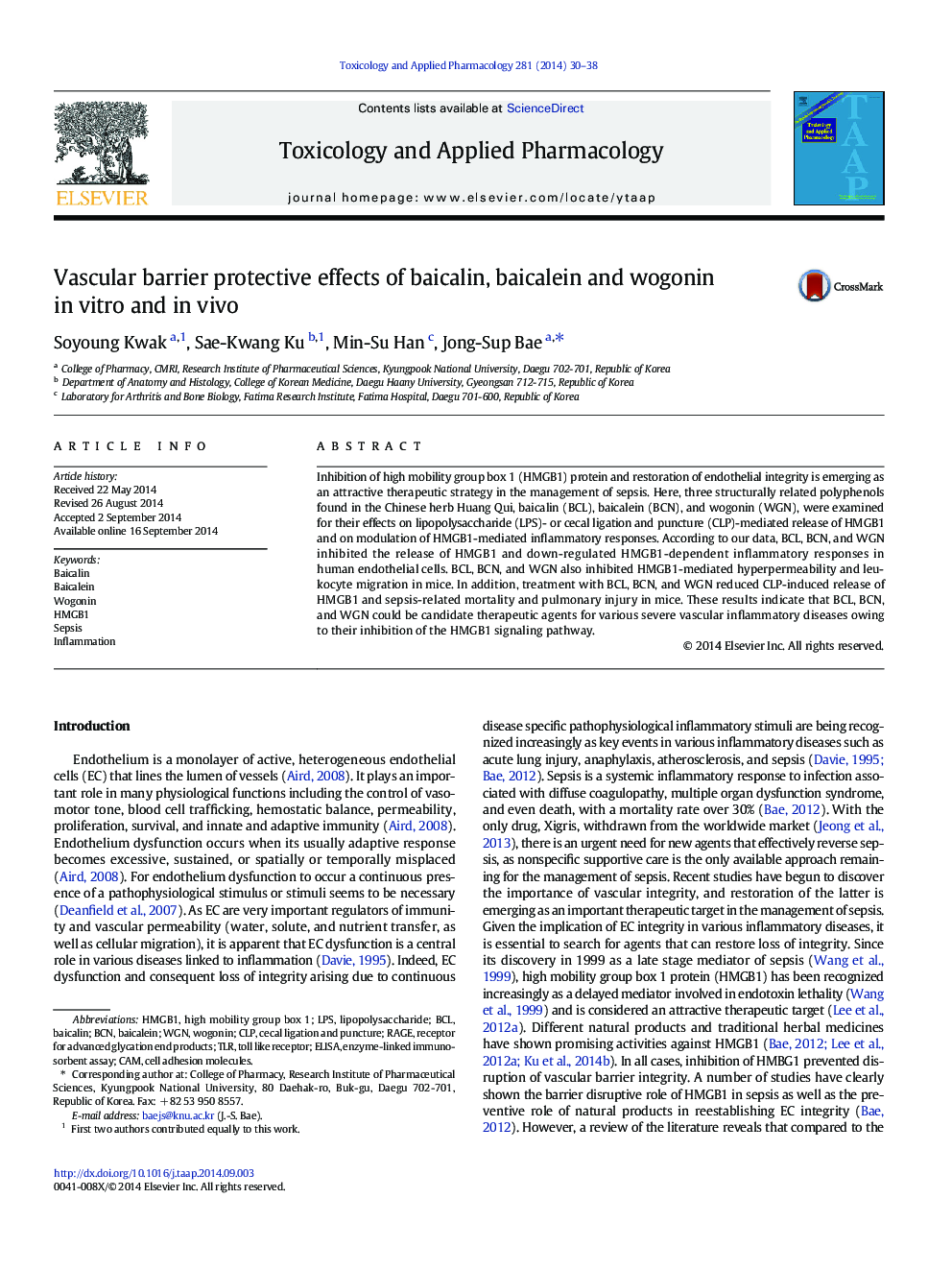| Article ID | Journal | Published Year | Pages | File Type |
|---|---|---|---|---|
| 2568469 | Toxicology and Applied Pharmacology | 2014 | 9 Pages |
•HMGB1 is an inflammatory mediator for vascular inflammation.•Baicalin, baicalein and wogonin inhibited HMGB1-induced hyperpermeability in vitro and in vivo.•Baicalin, baicalein and wogonin inhibited HMGB1-mediated inflammatory responses.•Baicalin, baicalein and wogonin suppressed the activation of NF-κB and ERK1/2 and production of TNF-α and IL-6.•Baicalin, baicalein and wogonin prevent CLP-induced septic mortality.
Inhibition of high mobility group box 1 (HMGB1) protein and restoration of endothelial integrity is emerging as an attractive therapeutic strategy in the management of sepsis. Here, three structurally related polyphenols found in the Chinese herb Huang Qui, baicalin (BCL), baicalein (BCN), and wogonin (WGN), were examined for their effects on lipopolysaccharide (LPS)- or cecal ligation and puncture (CLP)-mediated release of HMGB1 and on modulation of HMGB1-mediated inflammatory responses. According to our data, BCL, BCN, and WGN inhibited the release of HMGB1 and down-regulated HMGB1-dependent inflammatory responses in human endothelial cells. BCL, BCN, and WGN also inhibited HMGB1-mediated hyperpermeability and leukocyte migration in mice. In addition, treatment with BCL, BCN, and WGN reduced CLP-induced release of HMGB1 and sepsis-related mortality and pulmonary injury in mice. These results indicate that BCL, BCN, and WGN could be candidate therapeutic agents for various severe vascular inflammatory diseases owing to their inhibition of the HMGB1 signaling pathway.
